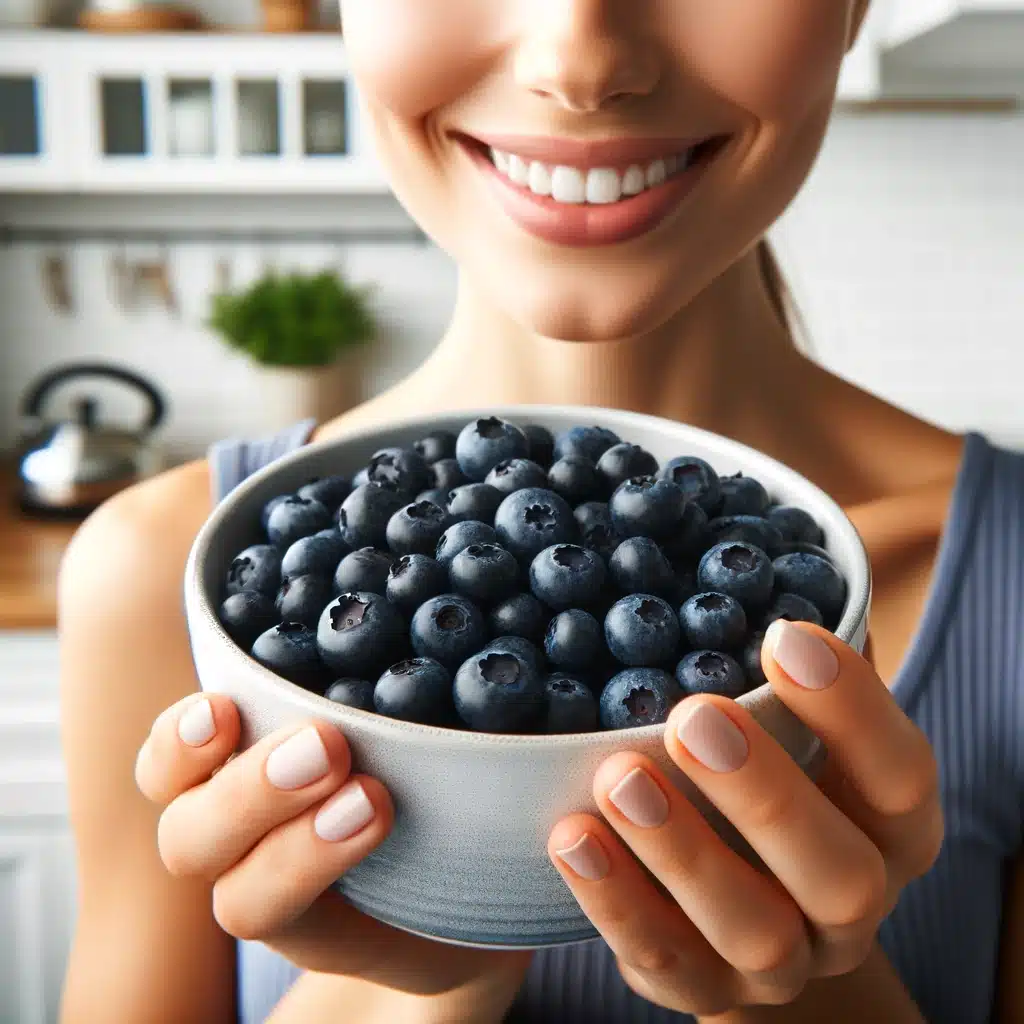Table of Contents
- Simplify Your Diet, Improve Nutrition, and Reduce Calories
- Understanding Nutritional Density
- Nutritional Density Scores
- 15 Highly Nutrient-Dense Foods
- Final Thoughts
Simplify Your Diet, Improve Nutrition, and Reduce Calories
Managing weight is a challenge many of us face. The process of dieting can often seem overwhelming. Various diets promoted by individuals or organizations often highlight the complexity of counting calories. They emphasize the hassle involved, claiming their method—a magical, revolutionary approach—will help you shed pounds effortlessly and look fantastic. Although they might have a point, these diets usually revolve around avoiding certain foods like carbs, fats, gluten, or eating after a specific hour, making dieting appear complicated.
The truth is that weight loss occurs with any diet that creates a caloric deficit. This principle is well-supported by extensive research, even if the diet consists of fast food. The key is caloric deficit, regardless of the food type. But wouldn’t it be great if there was a simpler way to eat healthier and lose weight?
Good news: there is! You can achieve weight loss without counting calories by focusing on nutritional density to make smarter food choices. As a bonus, you’ll feel fit, healthy, and fantastic.

Understanding Nutritional Density
Nutritional density refers to the concentration of nutrients in a food relative to its calorie content. Think of it as the nutrient-to-calorie ratio.
According to Drewnowski (2019), “Nutrient density of foods is commonly defined as the amount of selected nutrients per reference amount of food, expressed as 100 kcal, 100 g, or a serving size.”
The balance between the nutritional benefits of a food and its energy content is crucial when considering nutritional density. The fewer calories a food has, the more we can consume without exceeding our energy needs, which helps in managing weight. Our bodies store unused energy as body fat for later use. Therefore, controlling energy intake is essential for weight management.
Nutritional density includes micronutrients such as vitamins, minerals, and antioxidants. These micronutrients support various bodily functions and overall health. Antioxidants, which also include many vitamins and minerals, protect our cells from damage caused by free radicals by neutralizing them.
Macronutrients like healthy fats, fiber, and high-quality protein also contribute to nutritional density. Foods high in calories, often from carbohydrates and unhealthy fats, typically have lower nutritional density. However, certain proteins and fats offer significant benefits. Protein, for example, provides essential amino acids necessary for bodily functions and tissue repair. Animal-sourced proteins are among the best due to their complete amino acid profiles and high bioavailability, meaning they are easily absorbed and utilized by our bodies.
Nutritional Density Scores
Healthy fats provide essential fatty acids (like omega-3 and omega-6), good cholesterol, and fat-soluble vitamins. Fiber enhances digestion. Various nutritional experts and organizations have developed systems to assign scores for the nutritional density of different foods.
For instance, Darmon and colleagues introduced the Nutrient Density Score (NDS) in 2005 to estimate the nutritional adequacy of vegetables and fruits on a per-weight, per-calorie, and per-unit-cost basis. It is calculated by averaging the % Daily Value of 28 micronutrients and three macronutrients (fiber, Omega 3, and Omega 6) and dividing it by the percentage of daily caloric requirements based on a 2,000-calorie diet.
Other nutrient density ranking systems include the Aggregate Nutrient Density Index (ANDI) from Dr. Fuhrman and The Nutrivore Score from Dr. Ballantyne.
As Dr. Sarah Ballantyne notes, “Some scores calculate nutrient density as a function of food weight, which is influenced by nonnutritive compounds like water content… Given that our food supply is overabundant in calories while being overall depleted in nutrients, the more important information for the average consumer is how to maximize nutrients for each calorie, rather than for each gram or serving of food.”
15 Highly Nutrient-Dense Foods
Now that we have defined nutritional density, let’s explore fifteen of the most nutrient-dense foods. These are listed in no particular order.
Kale
Kale is often labeled a “superfood” due to its high nutrient content, including vitamins A, C, and K, folate, calcium, manganese, and antioxidants like beta-carotene. Its low-calorie content combined with high concentrations of antioxidants, fiber, and other micronutrients offers numerous health benefits, such as supporting eye health, bone health, and immune function.

Spinach
Spinach is a nutrient-rich vegetable containing iron, magnesium, and vitamins A, C, and K. It is essential for maintaining healthy blood, strong bones, and a robust immune system. Spinach is also low in calories, high in fiber, and contains many antioxidants, making it an excellent source of nutrition.
Broccoli
Broccoli is a nutritious vegetable packed with vitamins C, K, folate, potassium, and manganese. It is high in fiber and carotenoids such as β-carotene and lutein, which act as antioxidants protecting cells from damage. Broccoli supports immune function, bone health, and digestion.
Bell Peppers (Especially Red and Yellow)
Bell peppers are rich in vitamins C, A, and K, along with potassium and magnesium. Their vibrant colors indicate the presence of various antioxidants, like lutein and zeaxanthin. Consumption of bell peppers supports skin health, vision, and immune function. Being low in calories, they are a healthy addition to any meal.
Brussels Sprouts
Brussels sprouts are packed with essential vitamins and minerals like vitamins K, A, and C, folate, and manganese. They are low in calories, high in fiber, and contain phytochemicals with antioxidant properties that can reduce disease risk. Eating Brussels sprouts helps maintain strong bones, support immune function, and promote digestive health.
Sweet Potatoes
Sweet potatoes are loaded with vitamins A, C, and B6, and minerals like potassium and magnesium. They are high in fiber and antioxidants like beta-carotene. Different varieties of sweet potatoes provide a range of antioxidants. They promote eye health, immune support, and digestive wellness.
Beets
Beets, or beetroot, are rich in folate, vitamin C, potassium, and manganese. They contain no cholesterol and minimal fat. Beets are also high in antioxidants like betalains. Consuming beets can support heart health, regulate blood pressure, and enhance athletic performance.
Blueberries
Blueberries are highly nutritious, containing vitamins C, K, and E, and minerals like manganese. Despite their sweet taste, blueberries are low in sugar and high in fiber. Their deep blue color is due to anthocyanins, potent antioxidants that prevent inflammation and protect against diseases. Blueberries boost brain function, support the immune system, and promote gut health.

Eggs
Eggs are rich in high-quality proteins and fats, as well as vitamins and minerals. They provide essential amino acids, vitamins A, B12, D, and E, iron, folate, zinc, selenium, choline, and antioxidants like lutein and zeaxanthin. Consuming eggs aids muscle development, promotes brain health, and improves eye function.

Salmon
Salmon is nutrient-dense due to its high protein and fat content, offering complete amino acids, omega-3 fatty acids (EPA and DHA), and essential vitamins and minerals like vitamins D and B12, iodide, and selenium. Consuming salmon promotes heart health, brain function, muscle repair, and reduces cardiovascular risks.
Greek Yogurt
Greek yogurt is high in protein compared to regular yogurt. It is a complete protein, providing all essential amino acids for muscle repair and growth. Greek yogurt is rich in calcium, probiotics, vitamins B12 and B6, and cobalamin. Its consumption supports bone health, muscle repair, gut flora, and immune function.
Quinoa
Quinoa is almost a complete protein source, containing all nine essential amino acids. It is rich in fiber, magnesium, iron, potassium, and zinc. These benefits aid muscle repair, digestive health, and energy production. However, quinoa is relatively high in calories due to its carbohydrate content.
Almonds
Almonds, high in calories at 578 per 100 grams, are rich in healthy monounsaturated fats, protein, and fiber. They also contain antioxidants like tocopherol (Vitamin E) and micronutrients like iron, potassium, magnesium, and calcium. Consumption supports heart health, skin health, and energy production. Moderation is key due to their high-calorie content.

Kiwifruit
Kiwifruit is rich in over 20 micronutrients, including vitamins C, K, and E, potassium, folate, and copper. It contains antioxidants like polyphenols and carotenoids, supporting gut health, reducing oxidative stress, and protecting cells. Kiwifruit is low in calories and sugar, making it a nutritious snack.
Spirulina
Spirulina is a complete protein source, high in protein (about 60%) and healthy fats like gamma-linolenic acid (GLA) and omega-6 fatty acid. It is rich in vitamins A, K, B vitamins, iron, calcium, magnesium, potassium, and manganese. Spirulina also contains antioxidants like phycocyanin and chlorophyll. It boosts overall health, supports the immune system, and has anti-inflammatory properties.
Final Thoughts
In this article, we have explored nutritional density and highlighted fifteen of the most nutrient-dense foods: kale, spinach, broccoli, bell peppers, Brussels sprouts, sweet potatoes, beets, blueberries, salmon, eggs, Greek yogurt, quinoa, almonds, spirulina, and kiwifruit. These foods are packed with essential vitamins, minerals, antioxidants, and healthy fats.
Nutrient-dense foods should form the foundation of a balanced and nutritious diet. Variety is key to a sustainable diet. Including various nutrient-dense foods, such as fruits, vegetables, and lean proteins, ensures we consume all essential nutrients, enhancing

